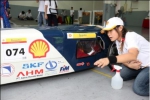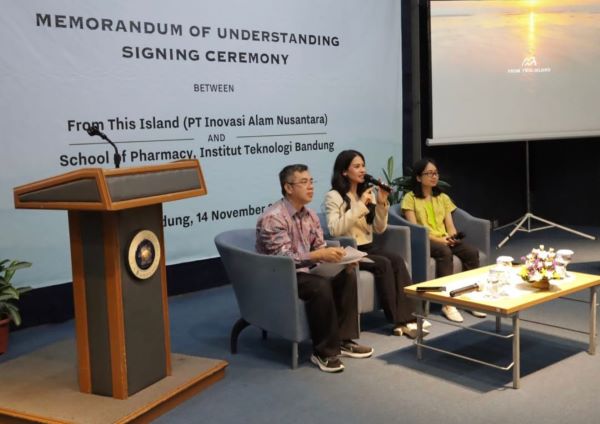Solution for Storage Time of Quantum Dot and Memory Device by Prof. Yudi Darma
By Adi Permana
Editor Adi Permana

BANDUNG, itb.ac.id— On Saturday (10/7/2021), Prof. Dr. Yudi Darma, S.Si., M.Si. delivered his speech at ITB’s Forum of Professors. As a lecturer from the Physics of Electronic Materials Research Group FMIPA ITB, he discussed nanostructure developments with other advanced materials for multifunctional data storage devices.
He conveyed that the ongoing growth of technology has gone beyond prediction. In 1949, Popular Mechanics suggested that computers in the future will weigh no more than 1,5 tons. However, reality does not match this expectation; by inventing its 1,5-kilogram version, the statement has been proven wrong.
“The experience and outlook of ENIAC, the world’s first computer, has sparked several forecasts in the future,” he added. Memory devices made of silicon-based quantum dots still have their weaknesses, including their storage period. They are only capable of saving data for a week. Due to this, Prof. Yudi decided to perform several trials to solve this issue. Eventually, he discovered the one solution: the engineering of band energy with a Si quantum dot and a Ge core.
Quantum dots are 3D-isolated semiconductors ranging from 1-100 nm. They are made of diverse semiconducting materials such as silicon (Si), germanium (Ge), cadmium telluride (CdTe), silicon-germanium alloys (Si/Ge), and indium gallium arsenide (InGaAs). Their configuration and size vary because their determined nature is different as well.
A short storage period occurs because the electrons produce high energy levels after injection/charging. This process will repeat as long as the energy band structure of the Si quantum dot is not modified. To obtain a longer storage span, a relatively thick controlled oxide is required to prevent the charges from escaping between the buoyant gates and it.
“The short retention time in both the quantum dot and memory device is caused by the high energy levels of the electrons represented from the aforementioned data. When we insert this information, the energy will be easier to dissipate, resulting in a shorter retention time,” Prof. Yudi reasoned.
At the end of the discussion, Prof. Yudi thanked everyone who had helped and supported him in achieving several awards. He also hoped he can contribute more to improve Indonesia’s technology.
Reporter: Nur Rama Adamas (Teknik Sipil 2020)
Translator: Ruth Nathania (Teknik Lingkungan, 2019)



.jpg)
.jpg)



